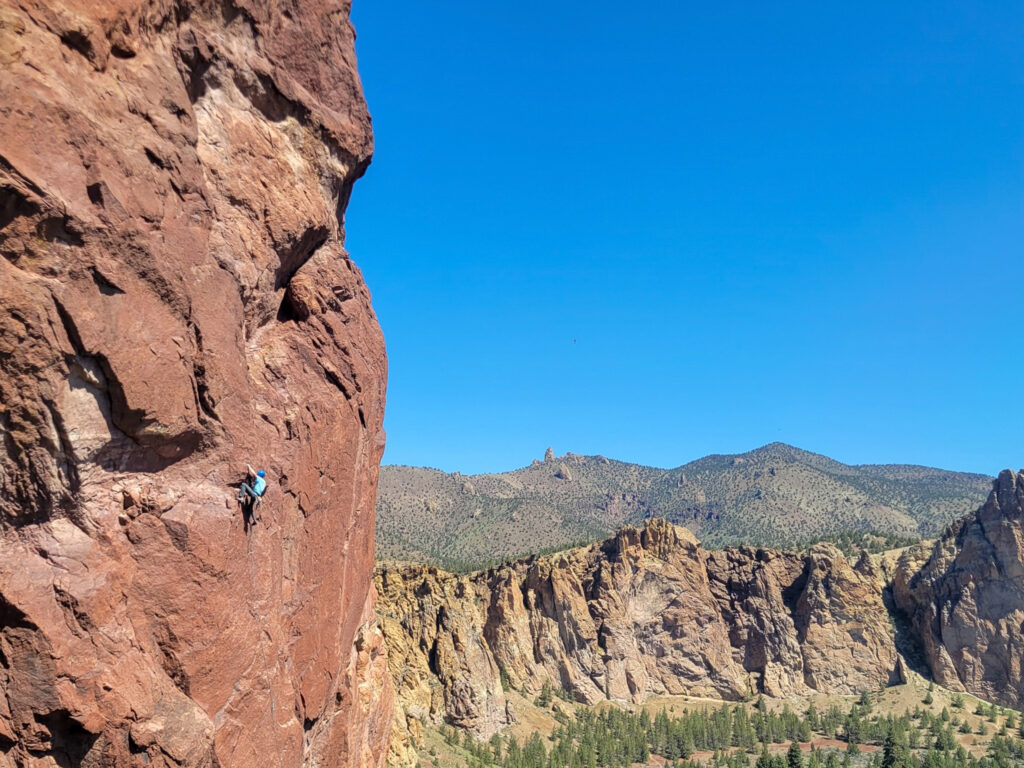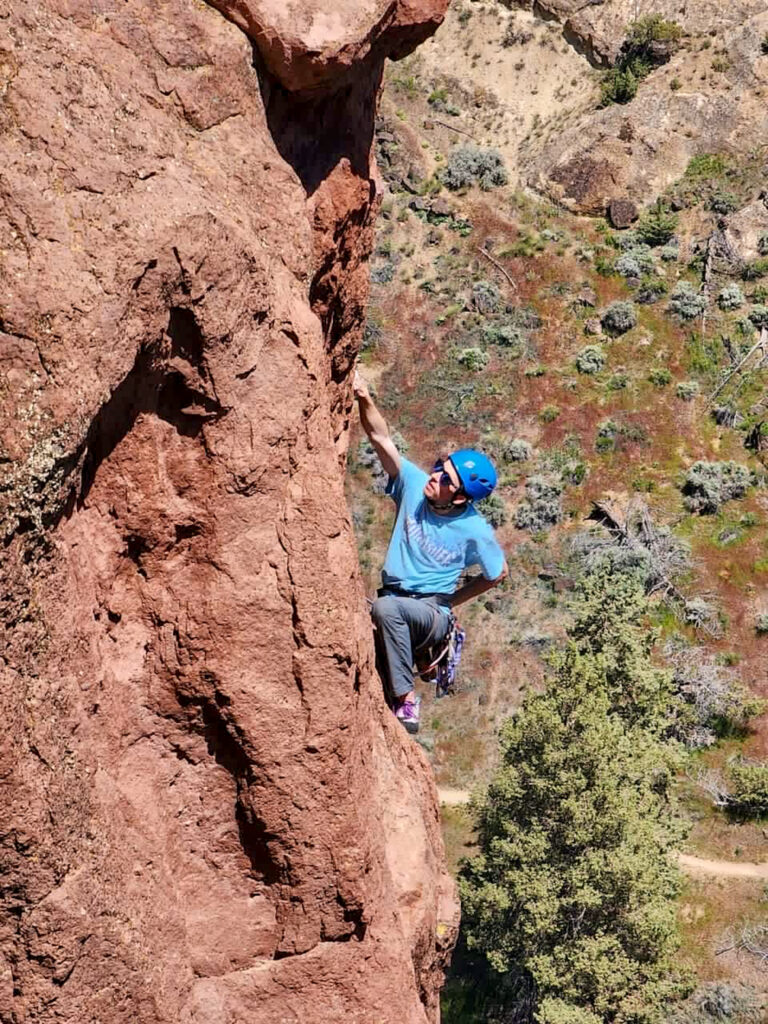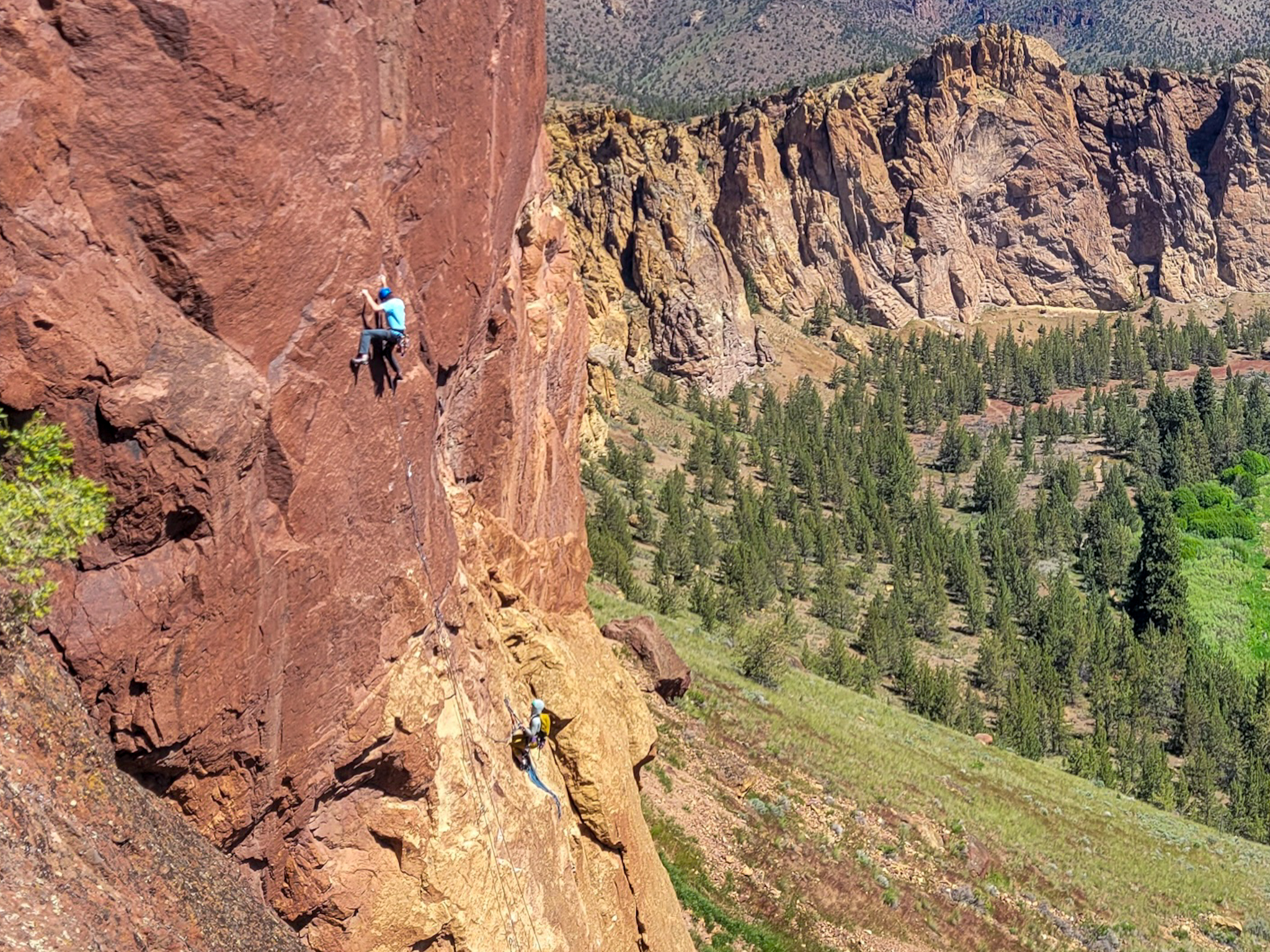5.11d, 4 pitches. Smith Rock State Park
I attempted this route on May 28, 2023 as part of a three day climbing trip to Smith Rock over Memorial Day weekend. To start the year, I set the goal of climbing multi-pitch routes that may require several attempts in order to redpoint – I wanted a multi-pitch project. I contacted my friend and climbing partner, Jane, and said that I had found an inspiring route that would give us a proper challenge. She was in, and we set off into the unknown at 9am.
I don’t care for this route’s name due to its reference to the 20th century Soviet forced labor camps, so I’ll just call it GA from now on. Names aside, this route features striking aesthetics as it climbs the solid, deep red stone of Smith Rock’s Red Wall. All the hard climbing is on perfectly vertical rock; ensuring clean lead falls and brilliant exposure. Like most Smith multi-pitches, the views from the route are phenomenal. GA climbs adjacent to another poorly named park classic, Dirty Pinkos (5.9), which is a fun juxtaposition of experiences. On one hand, having hoards climbers cheer you on from the pitches of Pinkos makes one feel like a celebrity. On the other, I found myself wishing I was on Pinkos’ easier terrain as I pulled on the impossibly thin moves of GA’s crux. On the day we attempted GA, I contacted some friends who were climbing Dirty Pinkos and had them take a few photos of our climb. Credit goes to them for the photos featured here. For our first attempt, we set the goal of just making to the top of the route. The climb starts with a pitch of 5.11a. The next pitch, the crux, clocks in at 5.11d. After the crux, the climbing eases into 5.10 terrain, so Jane and I knew that if we could get through pitch two, then we’d undoubtedly top out.
We swapped leads, starting with Jane on pitch one. This pitch starts right off Papillon (5.8) on edges and crimps. After a brief crux on vertical rock between bolts 3 and 4, the climbing continues up edges as the angle and difficulty eases before the anchor. The crux moves of this pitch felt strenuous and reachy for 5.11-, but I was still able to get the onsight as a follower. The pitch two headwall looms above as I approach the first anchor. A deep velvet red, this vertical face lacks the usual dusting of chalk that adorns most base routes at Smith Rock. An exciting opportunity to touch some clean, less traveled stone.
My turn to lead. After a few mild moves off the pitch one anchor, I launch into the sustained 5.11 movement that characterizes the first half of pitch two. A bad sidepull helps me get my feet into position on a sloping edge. I move my right hand up to a small nubbin, match the nubbin with my left hand, and then reach high with my right hand to a crimp. I can’t hold this crimp long enough to inch my feet higher and I call for Jane to take as I let go of the rock. A bolt at waist level keeps my lead fall short and safe. I try again with the same beta and fall, realizing that a higher left foot will help propel me into a jug after the crux. I try again, and crank hard on the thin right hand crimp, inch my left foot high to a good ripple, fire for a right hand jug, and stick it! With the crux below me, it’s 80 or so feet of 5.11- climbing that’s good until the last drop.

The third pitch is nothing to write home about, but I still enjoyed the climbing. A couple 5.10+ moves around a bulge move you onto a slab. From here, you climb a short but sweet flake to the anchor. The third pitch belay station was rather enjoyable because the Dirty Pinkos third pitch has an anchor not 10 feet away. We had the chance to high five and jest with our friends as Jane and I stared at the fourth and final pitch.
The final pitch is a tad dirty and still has some loose rock, but I’d argue that if this pitch was on the ground, climbers would line up and enjoy the sweet, sustained 5.9 movement. The crux occurs midway through this pitch where the angle steepens to slightly overhung, but the difficulty lies in fighting the pump and fatigue from the hard pitches below. After topping out and marveling at the view and our valiant first effort, Jane and I walked off the route via the misery ridge trail. Twenty minutes later, we’re at the base ready to take on the many classic base routes that Smith has to offer. A truly brilliant day.

